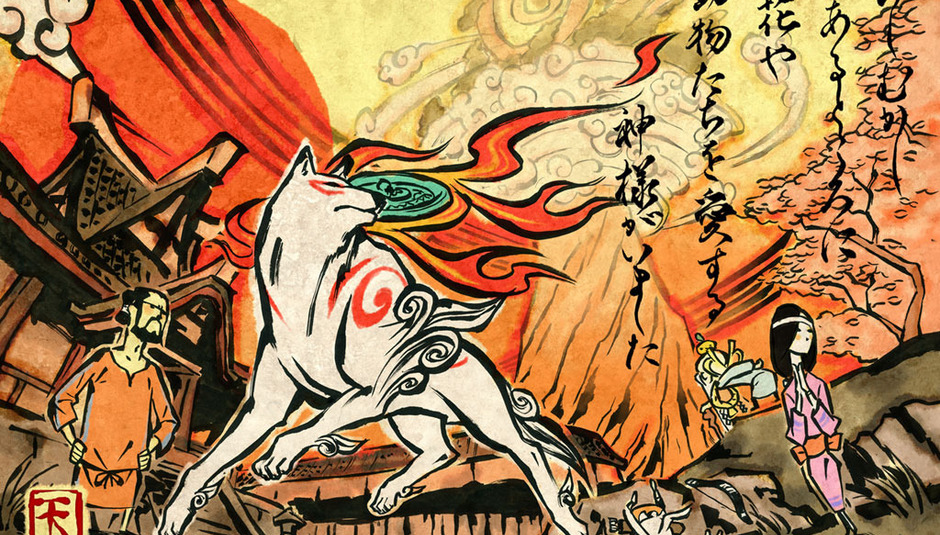The final day of 2012 marked the end of an era in the video gaming world as word broke in the UK that Sony was ceasing Japanese production of the PlayStation 2. The biggest-selling home console of all time, since its launch in March 2000 the PS2 has shifted over 150 million units and outsold its successor, the PlayStation 3, for a substantial period following the latter machine’s 2006 release.
This column, looking at ten perfect games for the PS2, was already planned ahead of Sony’s announcement – there it is, noted at the bottom of Savage Pixels #17. But now there’s a greater poignancy to selecting these games, armed with the knowledge that, finally, Sony has laid its greatest hardware success story to rest.
The PS2’s dominance of the sixth generation of games consoles can be partially attributed to its incorporation of DVD playback, and its innovative supplementary hardware. Unlike other machines of the time – 2000 saw the PS2 competing with Sega’s Dreamcast and Nintendo’s N64, and it subsequently saw off the GameCube and Microsoft’s Xbox – the PS2 managed to return gaming to the living room, offering multimedia functionality where other systems purely focused on games. It was arguably a ‘family’ machine well ahead of the Wii, with titles aimed at both hardcore and casual gamers alike.
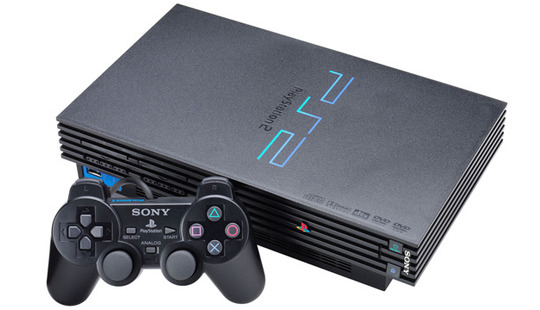
The EyeToy peripheral allowed gamers to interact with their PS2 without a conventional controller, using motion sensors and a microphone, and Guitar Hero’s debuting on the platform in 2005 was indicative of its dominance of the market: why should Harmonix initially align their product with any other, less-successful system? But neither gadgets nor being able to watch movies represent the most essential factor in the PS2’s amazing longevity. That is the result of a phenomenal software library.
Well over 2,000 individual, packaged titles have been released for the PS2, with more to follow as, while Sony is halting manufacturing of new consoles, developers are still making games for the huge remaining audience. Factor in backwards compatibility with a vast number of original PlayStation games – owners of shiny PS2s in the early 21st century could also play classics like PaRappa the Rapper, Wipeout and Final Fantasy VII on their new acquisitions – and Sony has released a figure of over 10,000 playable games for the system. It’s an incomparable number, and one that might put some off investigating what the PS2 has to offer today.
But cutting through the crap is surprisingly easy – with the rise of the PS2 running concurrently with increased internet coverage of the gaming world, it’s a doddle to separate essential titles from a seemingly endless pool of makeweights based on aggregate scores and archived reviews. What’s not necessarily so simple is getting hold of the supposed must-have games – but the ten I have selected below are generally available via the likes of Cex and Amazon. And with PS2 consoles available for as little as a fiver, if you shop around a bit, collecting and enjoying these games is a relatively inexpensive but massively rewarding pursuit.
And here is that ten. It’s not divided via genre-specific standouts, or ranked into a top ten chart. There will be ‘omissions’ – please sing their praises in the comments section. This ten is simply intended to highlight games that any owner of the console would be proud to make cornerstones of their collection. I have…
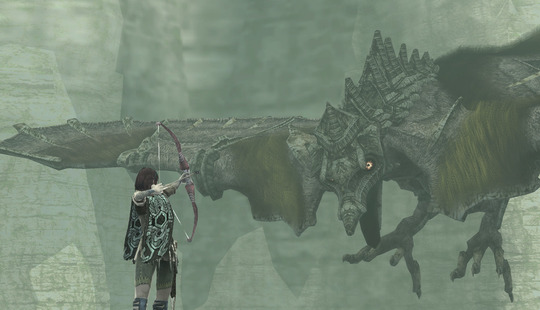
Shadow of the Colossus
(Developed by Team Ico; released in the UK 2006)
Expect to pay: £15-20
SOTC is one of those titles that has been said to blur the boundary between what’s a game and what is art. As the years have passed so its legend has grown, and gamers willing to explore its wide landscapes, barren environments and meandering mountains in search of fantastic, formidably massive monsters to slay have been rewarded with an experience that founds the kind of memories so few games manage. Is it art? No, it’s a game, albeit one masterfully designed by developers who might very well be artists within their field. It’s also one of the most devastatingly sad games ever released – without giving anything away, a palpable sense of melancholy pervades long before its conclusion is reached. SOTC is, simply, an unforgettable experience.
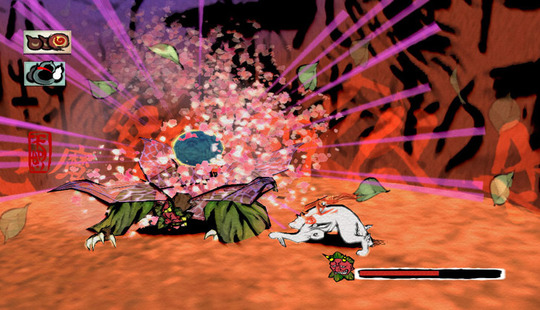
Okami
(Developed by Clover Studio; released in the UK 2007)
Expect to pay: £6-10
As beautiful in motion as SOTC, albeit rendered in a considerably more colourful palette and cel-shaded in style, Okami is a gorgeous game that so easily could have skipped the PS2 and gone straight to the PS3. Thankfully for PS2 owners it didn’t, and the end result, although it foreshadowed its developer’s closure by just a few months, is one of the most remarkable games on any recent system. An action-adventurer on paper, such a reductive summary neglects the joy of exploring its expansive, engrossing world. Playing as the sun goddess Amaterasu, presented as a white wolf with a shield upon her back, is hugely enjoyable – enemies can be dealt with via ‘traditional’ combat or by utilising the Celestial Brush, where bombs can be painted into existence to explode beside them. The brush can also open new pathways, slice obstacles in half, create suns to light Amaterasu’s way, and repair breakages in machinery to reactivate it... and more besides. It’s a fascinating tool, but just one standout element of a superb game that, even on last-generation hardware, is a sumptuous visual delight throughout.
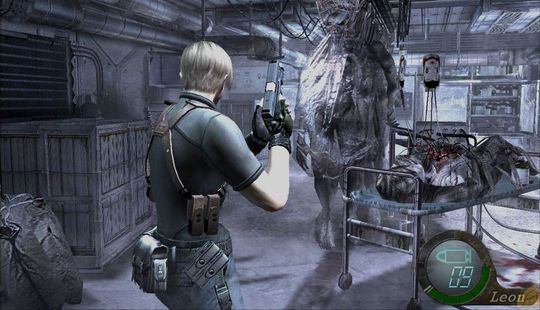
Resident Evil 4
(Developed by Capcom; released 2005)
Expect to pay: £5-10
Initially a GameCube exclusive, it wasn’t long before Resident Evil 4 made its way to the PS2, its November 2005 arrival following the March release for Nintendo’s console of the time (and, whisper it… but the PS2 version was better). The game was subsequently ported to the Wii and Windows, with XBLA and PlayStation Network versions made available in 2011. The reason for Resi 4’s enduring popularity and multi-platform availability is a simple one: it completely revitalised the Resident Evil series, upping the action from previous entries but retaining survival horror elements that Resi founded its reputation on in the first place. The plot is ridiculous, the ending just… appalling, actually, after what’s come before it. But Resi 4 relentlessly pricks and prods the adrenal glands, throwing wave after wave of aggressive cultist enemies at Leon S Kennedy, whose pursuit of the US president’s daughter takes him into a darkness that no following Resi game has matched. It also uses quick time events well – by the time of Resident Evil 6 (reviewed), sadly these button-mashing interactions had become an unwelcome plague as distressing as anything Umbrella could manufacture.
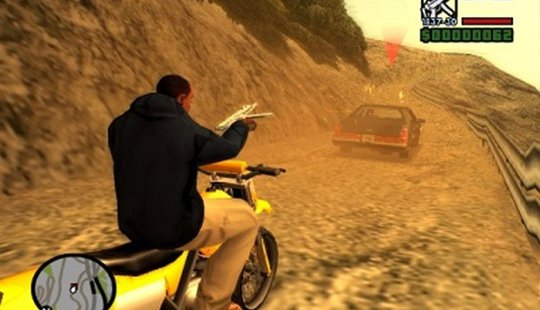
Grand Theft Auto: San Andreas
(Developed by Rockstar North; released 2004)
Expect to pay: £1-10
The PS2’s best-selling game is also one of its highest-rated, with Metacritic displaying an average score of 95% for Rockstar’s sandbox adventure set in a skewed vision of California. IGN called San Andreas the PS2’s “defining piece of software”, and while that sort of praise is perhaps a touch too gushing, spend a couple of hours in this game’s company and it’s clear that its developers have poured an immeasurable amount of dedication into the end product. Set in the early 1990s and featuring Samuel L Jackson, James Woods and Chris Penn amongst its cast members, San Andreas both glamorises the gangster attitudes synonymous with media portrayals of Los Angeles and turns the narrative inwards, unlocking a more sensitive, family-focused and introspective side of protagonist CJ. The gameplay is typical GTA, the storyline less so – and the huge world it takes place in, spanning three cities (based on LA, San Francisco and Las Vegas respectively), is amongst gaming’s greatest-ever settings. With its massive sales figures (over 27 million copies sold worldwide), you can currently pick up San Andreas second hand from as little as a quid.

We Love Katamari
(Developed by Namco/NOW Production; released in the UK 2006)
Expect to pay: £10-30
You have a ball. It’s called a katamari. You roll it over things that are smaller than it. These things stick to the katamari. The katamari grows bigger as these things stick to it. And that’s it. There are various modes of play – a campaign with challenges rising in difficulty, time attacks, and a co-op mode that requires two players to possess an unbreakable psychic link to get anywhere (seriously, don’t try it with a partner if your relationship is a little rocky). It’s entirely, brilliantly idiosyncratic, like nothing else in gaming apart from its predecessor, Katamari Damacy, which didn’t receive a UK release. That, and several sequels, but none of them are for the PS2. We Love Katamari is the high point of the series, bizarre and bombastic and completely, compellingly bonkers. And the music… oh, the music…
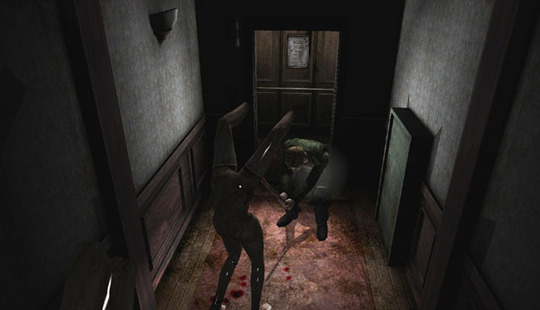
Silent Hill 2
(Developed by Team Silent/Konami; released 2001)
Expect to pay: £5-15
The creepiest game on the PS2, and one of the console’s early highlights, Silent Hill 2 took psychological torture to unprecedented levels as the player leads protagonist James Sunderland on a futile (or is it?) quest to find his wife, Mary... the same Mary who’s been dead for some time. The same dead wife who looks a lot like this Maria character, who’s got this idea that, maybe, Silent Hill isn’t exactly a friendly town. The same Maria who pokes around the local hospital with James and oh my shit what the hell is that… And so it goes. The controls are awkward, and visually Silent Hill 2 is showing its age more than other, more stylised games of the PS2’s catalogue. But immerse yourself in this exemplary slice of tension-cranking survival horror and those night terrors are likely to start pestering you during daylight hours.

Gitaroo Man
(Developed by Koei/iNiS; released in the UK 2002)
Expect to pay: £6-15
On the surface, Gitaroo Man looks like a cutesy rhythm action game for people who also enjoy PaRappa and other pre-Guitar Hero, regular pad tap-along titles (such as the excellent Harmonix pair of FreQuency and Amplitude, and the Space Channel 5 games). But while its visuals are certainly bright and breezy, its gameplay is rock hard – this isn’t a game that breaks you in gently, with the very first stage/battle of its solo campaign proving difficult for beginners. Indeed, expect to be cursing your way through notes-deflecting face-offs with diaper-wearing devils and disco-dancing UFOs… but it’s the fact that the game features such what-were-they-on characters that keeps you hooked. That, and the different modes of powering up, defence and attack that make up a standard battle. That, and the splendid original soundtrack courtesy of Japanese band COIL. An under-appreciated gem amongst PS2 music titles, Gitaroo Man is fun and challenging, offering both single-player longevity and local multiplayer high jinx.
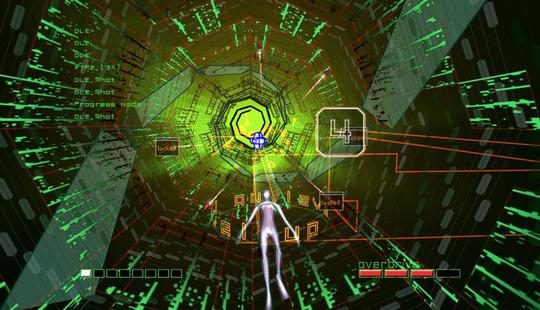
Rez
(Developed by United Game Artists; released in the UK 2002)
Expect to pay: £5-20
Rail shooters: you either love ‘em or hate ‘em, it seems. Rez, though, deserves to be experienced by anyone and everyone, at least once – although if you insist on playing it with the Trance Vibrator attached, I will call you out as some sort of pervert. Using simple lock-on controls and an occasional targets-clearing multi-laser-thingy (called Overdrive), the player guides a morphing avatar through a faltering computer network. Graphically strong with a virtual reality feel, Rez’s real trump card is its pulsating electro soundtrack – against which the player’s own shots, hits and power-ups comprise music-embellishing effects. Publisher Sega sold Rez as a game tied to the characteristics of synaesthesia; but, truthfully, such claims aren’t really provable with said condition experienced via largely involuntary processes. It’s unlikely that one player will ‘see’ quite what the next does. What is true: Rez is a phenomenally successful shooter with an equally high-quality soundtrack.
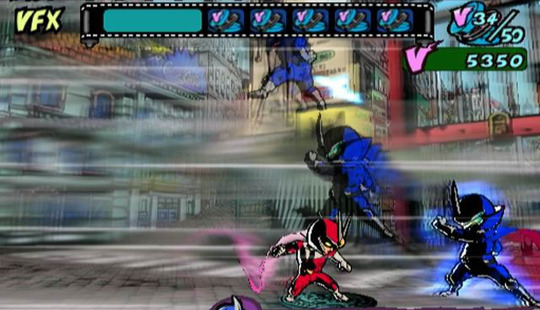
Viewtiful Joe
(Developed by Clover Studio; released 2004)
Expect to pay: £2-12
Another game that debuted on the GameCube before appearing on the PS2, Clover’s Viewtiful Joe is a tough old-school-styled action-platformer-cum-beat-‘em-up, played scrolling left to right, in which our hero Joe has to save his girlfriend from a collective of evil Movieland villains. As it’s set (largely) in this Movieland, Viewtiful Joe’s developers paint a variety of environments inspired by the silver screen, from sci-fi flicks to jungle adventures. What might otherwise be a fairly standard offering is improved considerably by Joe’s VFX Power which, when activated, enables him to ape a number of camera tricks: slowing and speeding up time, and zooming in on enemies to stun them. Collectable coins won by beating down enemies in entertaining ways allow for the purchase of new abilities between stages (‘episodes’), and the whole thing flows together quite wonderfully. In keeping with typical cinema cuisine, health is replenished by munching burgers. Super. Shame Joe’s irritating catchphrase of “Henshin-a-go-go, baby” is anything but… Yet if you can get over that, and the steep difficulty curve, you’ll find Viewtiful Joe to be amongst the PS2’s greatest games of its kind.

God of War II
(Developed by SCE Santa Monica; released 2007)
Expect to pay: £5-15
Like Okami, the sequel to 2005’s God of War arrived relatively late in the PS2’s commercial software cycle, finding space on store shelves beside a host of PS3 titles. But if the PS2 was going out, it was going out with a bang – and for the money, you can’t get more bangs for your minimal bucks than with God of War II. This game is stupidly awesome in its relentless assault on the senses – visually superlative for the hardware, sonically stirring and the gameplay is easy to pick up, making an early battle with the huge Colossus of Rhodes an effortlessly entertaining ‘introduction’ confrontation. A big-seller, shifting over four million copies, God of War II makes a substantial claim to be the best hack-and-slasher ever produced. A stack of unlockable features add longevity to what is already a replay-value-rich experience, one which makes the player feel as powerful as the game’s all-killer protagonist Kratos. The Greek mythology’s played fast and loose, but the action is never less than incessant – if you own a PS2, like smashing pixellated skulls and don’t own God of War II, something’s very wrong.
What, no Ico? Not a whisper of a Metal Gear Solid game? No space for Final Fantasy X or XII, not to mention Persona 3 or 4? No God Hand, or TimeSplitters, or Pro Evo 6? Beyond Good & Evil didn’t warrant a mention? No Yakuza 2? No Psychonauts? (Actually, now that you mention Psychonauts, it probably should be up there…) Share your favourite PS2 games in the comments section, just down there…
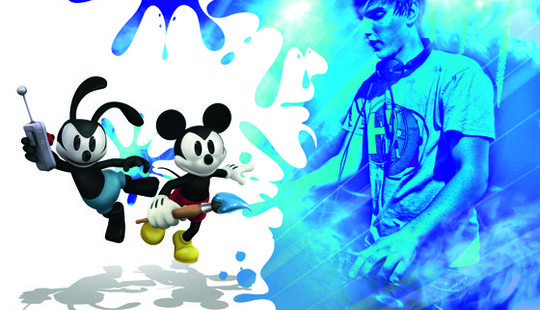
Fantastic Five: Netsky
DJ and producer Netsky had a pretty great 2012. The Belgian’s second album, titled simply 2, broke the UK top 30 and he scored three consecutive top 40 singles, with the video for ‘Come Alive’ racking up well over four million views on YouTube.
Mixmag has called him the “new face of bass music”, but despite being a very busy bod indeed, Netsky found time in 2012 to remix some of the music from Epic Mickey 2: The Power of Two (reviewed in the last column). Titled ‘Epic Mickey 2 (Remix)’, the track’s video features game footage beside clips of the man himself in action – check it out beneath Netsky’s Fantastic Five choices…
Portal… “Great idea, a very addictive modern puzzle game."
Half-Life… “I’ve always been a supporter of Valve games, and I love the scenario.”
Epic Mickey 2: The Power of Two… “I really like the story of Mickey and Oswald, and the gameplay is great.” (And, yes, he would say that.)
The Legend of Zelda… “One of the most iconic game characters of all time. I absolutely loved this when I was young.”
Grand Theft Auto… “A great way to release steam, and I love games where you’re free to do whatever you want.”
Netsky’s official website is right here.
NEXT MONTH: A look at Aliens: Colonial Marines, finally out after suffering several development headaches, and why is it that Hollywood hits so rarely spawn successful video games? In other words, it’s time to scan the bargain bins for some crappy tie-ins…

